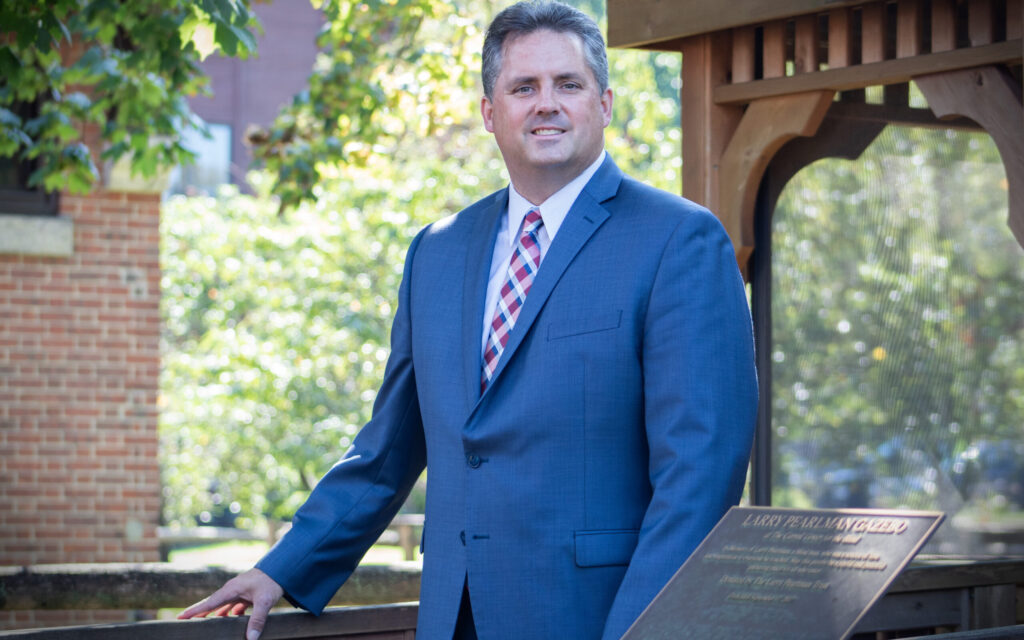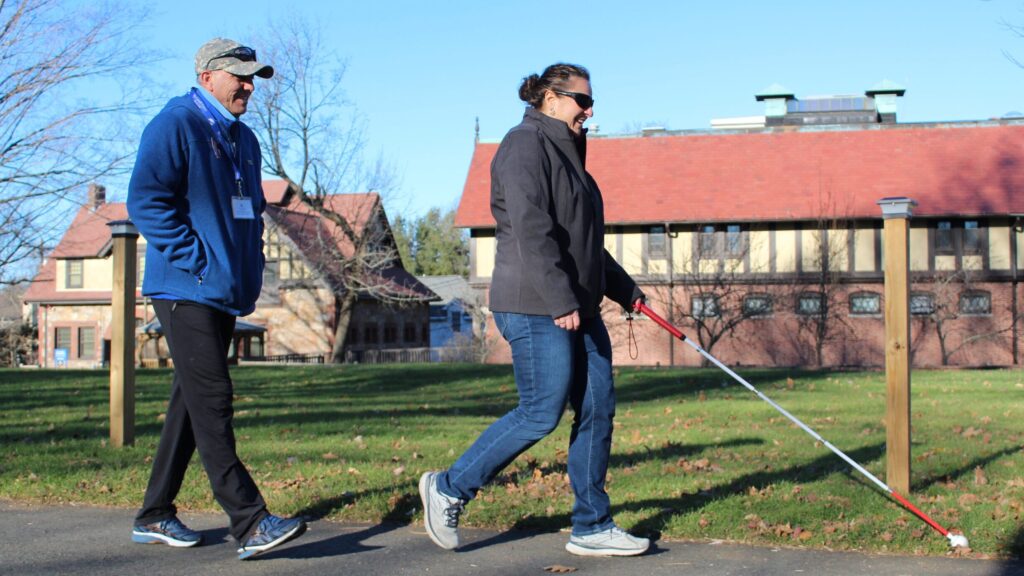CarrollCenter1
The Carroll Center for the Blind is raising funds to hire more staff and make improvements to its buildings. Courtesy Photo
The Carroll Center for the Blind announced on Dec. 11 their new fundraising campaign that aims to raise $18 million dollars in the next five years to expand services, hire more staff, improve their buildings and grow their endowment.
The Carroll Center, which is located 770 Centre St, was initially founded as the Catholic Guild for All the Blind. In 1938, Father Thomas Carroll became assistant director, and was instrumental in growing the center into the large service provider it is today. Today, they serve around 4000 people per year, 75% of whom are Massachusetts residents.
“Our reach needs to expand,” said Greg Donnelly, Carroll Center president. “We’re the only provider for people of all ages and all stages of vision loss.”
Serving adults with blindness is important because this is a growing population: partly because of age-related vision loss, but also because of an increased prevalence of medical eye diseases, like diabetic retinopathy, as well as strokes and heart attacks that cut off oxygen to the optic nerve, and traumatic blindness caused by car accidents or workplace injuries.
“Under 10% that we serve are blind since birth,” said Donnelly.
Close to 60% of people they serve have an additional disability, including a growing prevalence of blind children who also have autism.
The Carroll Center also has a program specifically for people with diabetes who struggle to manage their diabetes due to their vision impairment.
“Many of our clients come to us with some form of usable vision, but not enough to have the quality of life they deserve without this essential training,” Donnelly said.

That training can include working with an orientation and mobility specialist on how to use a white cane and navigate the world without sight, but can also be on how to use the increasingly large number of assistive technologies, such as screen readers. Some people with a visual impairment have progressive conditions that lead to increasingly diminished sight over time, and so they may start out needing to learn how to use screen magnifiers and then need additional training on mobility later.
The Carroll Center offers a residential vision rehabilitation program, where adults, many of whom were previously sighted, can learn how to navigate the world as a blind or visually impaired person.
Donnelly said that the residential component is important, because the students can be around “other individuals going through the same kind of loss – it makes it easier among peers.”
They have an adjustment counselor, a psychologist, and a social worker on hand to support people who are struggling with their new disability.
However, not all blind people can spend months at a residential program, which is why the Carroll Center also sends trained orientation and mobility specialists out into the community and into people’s homes.
“Without that reach, some people just won’t leave their home. Some of these individuals are so socially isolated, they find that more disabling than vision loss itself,” Donnelly said.
They currently only have two full time staff members doing this, who are extremely busy with the amount of demand for their services. In addition to hiring more O&M specialists, they would also like to hire more teachers of the visually impaired (TVIs). Currently, the Carroll Center serves about 400 children in Massachusetts, with 25 schools on a wait list.
While students in Newton have access to the Perkins School for the Blind in Watertown, there is immense benefit for a child with a disability being able to attend school in their own local community with their neighborhood peers.

The Carroll Center offers two unique programs for people with blindness: sailing and fencing.
Father Carroll initially introduced the fencing program in the 1950s to help blind veterans augment their orientation and mobility training. While these may seem like challenging activities without sight, they are both part of the Center’s mission to ensure that people with visual impairment can live a full life.
Continuing to improve their buildings is a particular need. While many Newton area organizations have challenges with older spaces (one of the Center’s buildings dates from the 1800s), it is of a particular need for an organization that serves people who are blind. New technologies can make it significantly easier for blind people to navigate and use the built environment (such as voice activated thermostats), but these upgrades can be expensive. They would also like to continue to add solar panels to make their campus more environmentally friendly.
If you are interested in contributing to the Carroll Center’s mission, you can visit their fundraising campaign page at https://carroll.org/generations/.